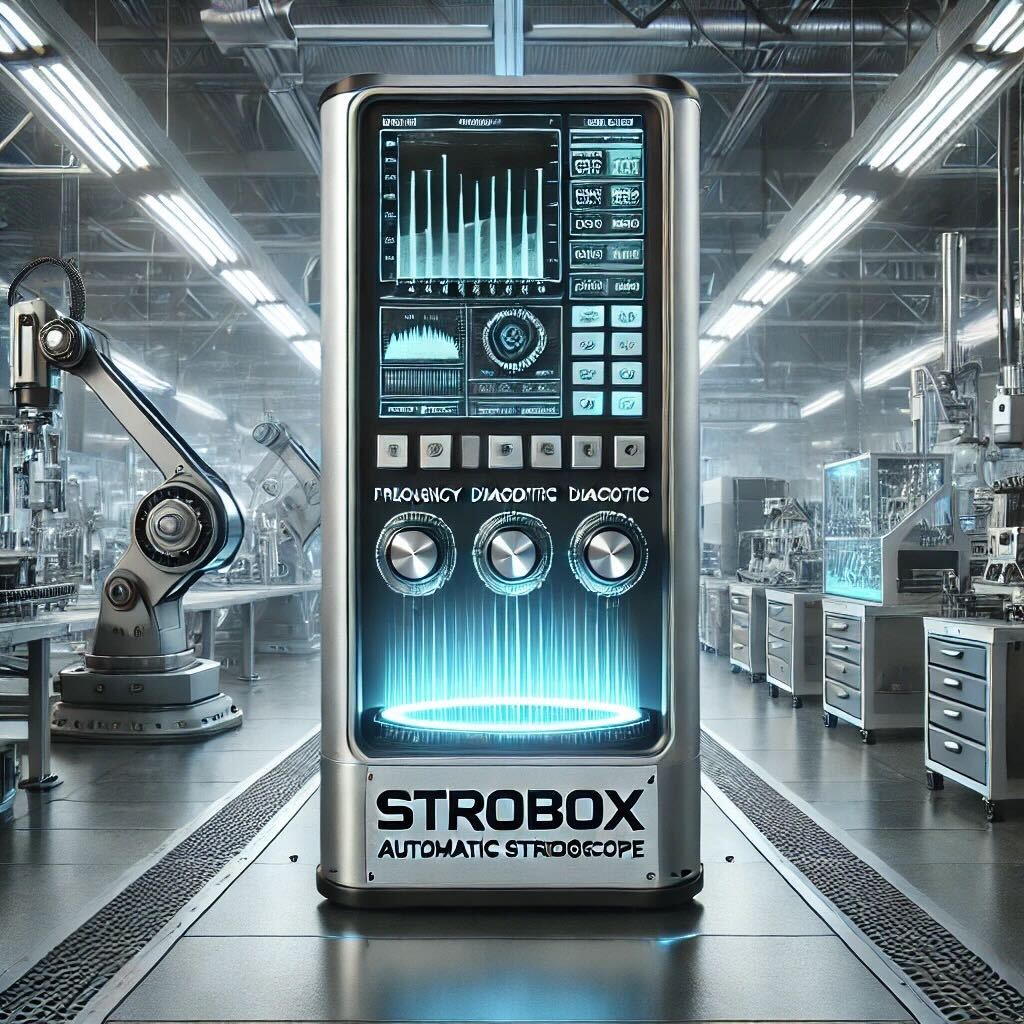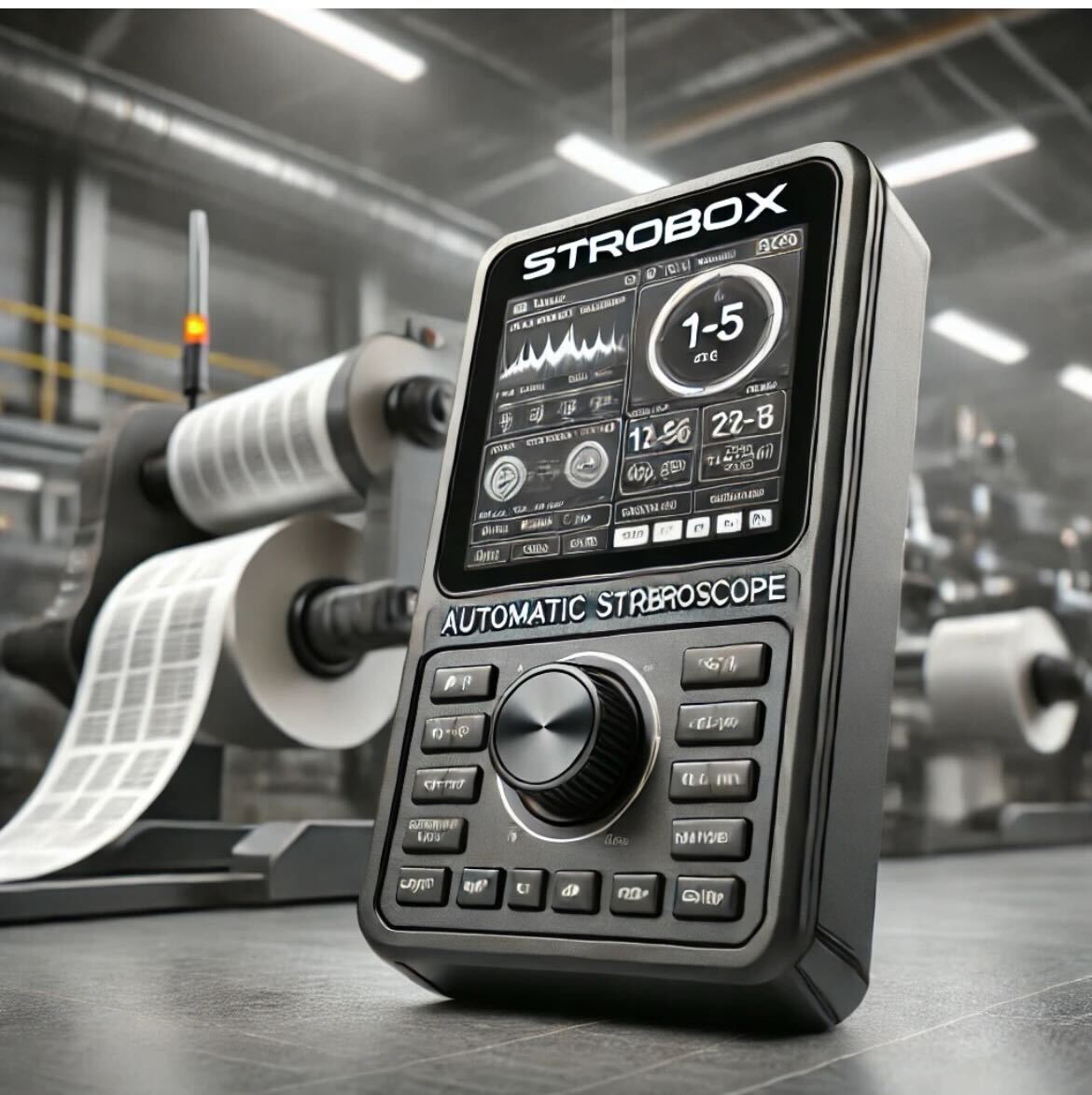StroboX Use Case in Roll-to-Roll Printing
Lorem Ipsum is simply dummy text of the typesetting industry.

Roll-to-roll printing is a high-speed, high-volume manufacturing process used in various industries, including packaging, electronics, and textiles. Ensuring consistent print quality across large volumes is critical to maintaining production efficiency and product quality. This white paper explores how StroboX, an advanced AI-powered stroboscope, enhances quality control and predictive maintenance in roll-to-roll printing environments.
Roll-to-roll printing involves continuous processing of flexible substrates, such as paper, plastic, and metal foils. The rapid movement and high-speed printing require precise monitoring to detect and correct any anomalies that could affect print quality. Traditional manual stroboscopes often fall short in such demanding environments due to their limited accuracy and reliance on operator expertise.
Challenges in Roll-to-Roll Printing
01
High-Speed Operations
The rapid pace of roll-to-roll printing makes it challenging to identify and rectify print defects in real-time.
02
Consistency
Maintaining consistent print quality over long runs requires continuous monitoring and adjustment.
03
Downtime
Manual inspection and adjustments can lead to significant downtime, impacting overall productivity.
StroboX Solution
StroboX addresses these challenges with its AI-driven capabilities and automatic adjustments. Here’s how StroboX enhances roll-to-roll printing:
Real-Time Monitoring
StroboX provides real-time frequency adjustments, ensuring that any anomalies are detected and corrected immediately.
High Precision
The advanced AI algorithms in StroboX deliver unmatched accuracy, maintaining consistent print quality across large volumes.
Reduced Downtime
With automatic detection and adjustment features, StroboX minimizes downtime, enhancing overall production efficiency.
Key Features and
Integration Potential
Integrating an auto stroboscope into the predictive maintenance market could provide several benefits and open new opportunities, especially if it addresses the limitations of traditional stroboscopes. Here’s how an advanced, automated stroboscope could fit into the predictive maintenance landscape
Automated Operation
Feature:
Continuous, real-time monitoring without manual intervention.
Benefit:
Reduces human error and labor costs, allowing for constant equipment observation.


Data Collection and Analytics
Feature:
Equipped with sensors to collect data on vibration, rotational speed, and visual anomalies.
Benefit:
Provides comprehensive data that can be analyzed to predict maintenance needs.
Integration with IoT and AI Platforms
Feature:
Connectivity to IoT networks and integration with AI-driven predictive maintenance platforms.
Benefit:
Enables seamless data transfer and advanced analytics, leveraging machine learning algorithms to identify patterns and predict failures.


Multi-Sensor Capabilities
Feature:
Combined with other sensors (e.g., temperature, ultrasonic) to provide a holistic view of equipment health.
Benefit:
Enhances diagnostic capabilities and accuracy by corroborating visual data with other types of sensor data.
User-Friendly Interface
Feature:
Intuitive dashboards and alerts for maintenance personnel.
Benefit:
Simplifies data interpretation and action, allowing maintenance teams to respond quickly to issues.

Potential Benefits
01
Enhanced Visual Diagnostics
Allows for detailed visual inspections of rotating machinery, detecting issues that might not be apparent through other sensor data alone.
02
Improved Rotational Speed Monitoring
Provides precise measurement of rotational speeds, identifying deviations that could indicate problems.
03
Real-Time Alerts and Maintenance Scheduling
Automated alerts based on visual data can prompt timely maintenance actions, preventing unexpected downtime.
04
Comprehensive Equipment Monitoring
When integrated with other sensors, it offers a more complete picture of equipment health, improving predictive maintenance accuracy.
Challenges and Considerations
Cost and Implementation
Initial costs of developing and implementing advanced auto stroboscopes might be high.
Solution:
Demonstrating ROI through pilot programs and case studies can help justify the investment.
Data Integration and Management
Integrating stroboscope data with existing predictive maintenance systems might require significant effort.
Solution:
Ensuring compatibility with common IoT and data analytics platforms can facilitate smoother integration.
Training and Adoption
Maintenance teams will need training to effectively use and interpret data from auto stroboscopes.
Solution:
Providing comprehensive training programs and user-friendly interfaces can ease the adoption process.
Reliability and Maintenance of the Stroboscope
The auto stroboscope itself must be reliable and require minimal maintenance.
Solution:
Designing robust, low-maintenance devices with self-diagnostic capabilities can enhance reliability.
Market Potential
Industrial Sectors
Industries with heavy reliance on rotating machinery (e.g., manufacturing, power generation, oil and gas) could benefit significantly.
Predictive Maintenance Providers
Companies offering predictive maintenance solutions could integrate auto stroboscopes to enhance their service offerings.
OEM Partnerships
Collaborating with equipment manufacturers to embed auto stroboscopes in new machinery could create new market opportunities.